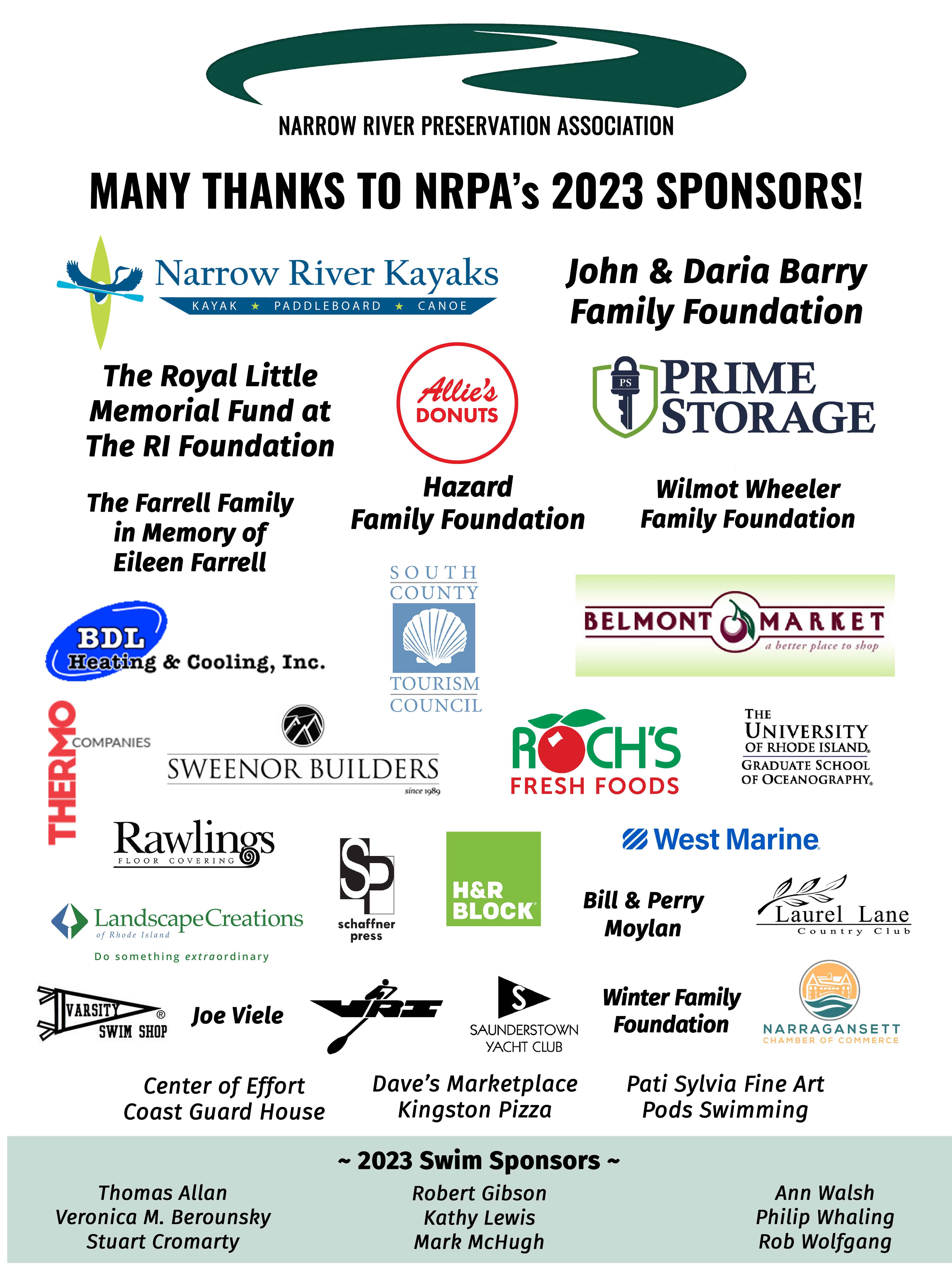Narrow River, also known as the Pettaquamscutt River, forms a natural boundary between the towns of Narragansett, South Kingstown and North Kingstown. Not truly a river, it is an approximately seven mile long tidal inlet connected by a narrow channel to a series of kettle basins fed by a small stream. Although mostly shallow, it does have two unusually steep-sided ponds, one of which plunges to a maximum depth of approximately 60 feet. The Narrow River Watershed extends from Silver Spring Lake and the Shady Lea Mill area in North Kingstown south to Narragansett Pier and Silver Lake in South Kingstown.

 The Narrow River is fed by a series of streams that flow from Pendar Pond to Silver Spring Lake to Carr Pond and hence by Gilbert Stuart Stream into the Upper Pond of Narrow River. Numerous other small streams flow into the river along its length, particularly around the southern edge of Pettaquamscutt Cove.
The Narrow River is fed by a series of streams that flow from Pendar Pond to Silver Spring Lake to Carr Pond and hence by Gilbert Stuart Stream into the Upper Pond of Narrow River. Numerous other small streams flow into the river along its length, particularly around the southern edge of Pettaquamscutt Cove.
The Narrow River is a small estuary comprised of two ice block basins, Upper and Lower Ponds, a central narrow channel between Lacey Bridge and Middle Bridge, a southern shallow basin, Pettaquamscutt Cove, and a narrow tidal inlet, The Narrows.
The Narrow River occupies a small, steep-walled bedrock valley partially filled with glacial sediment deposited during the last retreat of the ice about 16,000 years ago. The level of the Atlantic Ocean rose with the melting of glacier ice and flooded into the Narrow River about 2,500 years ago. The rising water level covered a glacial delta plain creating the shallow Pettaquamscutt Cove, and flooded over Casey’s Sill in the north to create an anoxic basin in the Upper Pond. Influx of sand eroded from Narragansett Beach has created flood-tidal deltas at the seaward end of the Narrow and north of Sprague Bridge, filling the northern end of Pettaquamscutt Cove.
Although the landmass of the watershed is one small section of Rhode Island, the Narrow River provides a rich biodiversity of animal and plant life. The protection of this biodiversity has been a major concern to NRPA since its inception in 1970. NRPA is proud to work with local governments, federal agencies, other non-profit organizations and watershed residents to protect the Narrow River Watershed and its inhabitants as population grows and land development increases.
 A Quick Tour of Narrow River
A Quick Tour of Narrow River
by Richard Grant, NRPA Board President – Summer 2017
The mouth of the Pettaquamscutt (Narrow) River is located at Narragansett Town Beach just past The Dunes Club. There is an outcropping rocks north of the river’s mouth that suggests that there were once quarries up and down the Pettaquamscutt River.
The mouth of the river is pleasurable for swimming and boating, but are challenging at low tide for the larger crafts. The Narrows, leads one to the Sprague Bridge where a portion of the previous bridge has been saved for sight seeing. Previously, there was a wooden covered bridge where the Seaview Rail line crossed the river.
Just after the US Fish and Wildlife kayak launch area is Pettaquamscutt Cove.: it is now the Chafee National Wildlife Refuge under the management of the US Fish and Wildlife Service. At this point one can see Sedge island, which housed the Red Shack, a historic remembrance of the people who lived and worked in the watershed. In this area, research that included digging deep into the river, located remnants of a forest forty feet below the river floor. Glacier marking are noted on a large out cropping at the South County Museum grounds.
Heading north, there are sand bars as the water route leads one toward Middlebridge, one of the bridges that connects South Kingstown and Narragansett. Just before Middlebridge there is a farm site called Bull Garrison that includes a memorial that was burned during the early days of the colony. This area is now open to walkers and is the location of a guided salt marsh walk during the ‘Gansett Days celebration every September.
Middlebridge has been replaced several times and now marks the spot where the Town of Narragansett and NRPA holds educational events during the summer months. The Middlebridge Marina holds a few boats and the property is home to several buildings, including three summer cottages. The URI Rowing Team (women) also makes its home here.
As one travels up river, to the left on a winter day, one can see Pettaquamscutt Rock at Treaty Rock Park. Just a step or two north from Treaty Park can be found the Cajoot Graphite Mine site. This outcropping that appears in East Providence and continues to appear formerly in Garden City and East Greenwich, was mined unsuccessfully in the early 1900s. The historic spot is now owned by the Narrow River Land Trust.
As we move to the north under Lacey Bridge to the Lower Pond, to the west along Walmsley Lane, there is the site of the Glebe; it is only a remembrance marked by a low stone wall. At the top of Walmsley Lane is LaFarge Park and Campanella Rowing Center, home to the URI Crew Club (men) and O.A.R.S..
Continuing north, past Casey’s Sill, we enter Upper Pond. Much of the land along the east side of Upper Pond is owned by Historic New England, which hosts two entities: Camp Grosvenor, a summer camp run by the Boys and Girls Club of Newport County, and Casey Farm.
Feeding Upper Pond is Gilbert Stuart Stream, which flows through Gilbert Stuart Homestead and Museum. This area is the best place to view the annual river herring migration, in which thousands of alewife and blueback herring (also known as buckeyes and several other nicknames) continue their ancient ritual of swimming up Narrow River to spawn in Carr Pond, only to swim back out to sea.
Even further north from Carr Pond, one visits Shady Lea Pond en route to the Narrow River Watershed’s origin at Silver Spring Lake.






